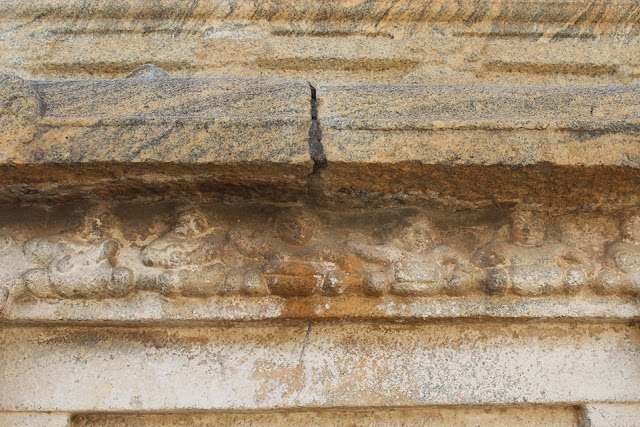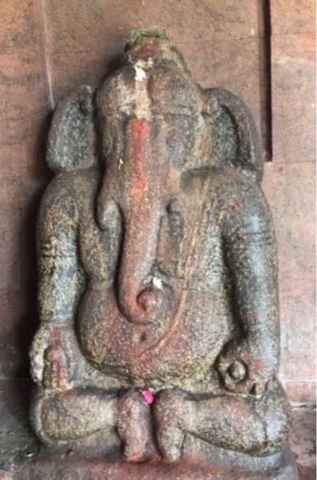One magical Sunday, I got a chance to visit
Panchalingeshwara temple in Begur . The whole trip acquired a
different connotation in her presence!
I had always thought that Bangalore did not have any grand
temples. Perhaps the most powerful dynasties of South India found no reason to
be bangalored in those days!! But how my judgment was to be altered and
impression to be corrected, is the story behind this post.
The moment I spotted
the temple, I was stuck by its striking resemblance to the famous
Dharamrajaratha at Mahabalipuram. It transpired later that it was indeed inspired by
the Pallavan style of architecture.
The Twin Vimanas
This is one of the
oldest temples in Bangalore, built in ninth century A.D. An inscription found
in the temple mentions “Bengaluru” thus pushing the antiquity of the city back
by a couple of hundred years.
The charm of this
temple lies in the simplicity of its design. Visiting the temple one can easily
understand the plan of the Dravidian style of Temple architecture: Nandi,
mandapa, antarala, mahamandapa, garbha griha topped by a pyramidal
shikhara, culminating in a stupa like
finial. The temple is enclosed within 4 walls with a tank or a well, a Dhwaja
stambha and the enclosed temple complex is to be entered through a Gopuram.
This temple can be model for text book learning on south Indian temple architecture for school going children!!
Let the Lesson begin:
The Dhwaja Stambha
The Vrishabha Stambha
The Vrishabha on the stambha
The Nandi Mantapa with granite pillars
Surya Narayan Swami blessing a devotee!!
Ashta Dikpala panel on the ceiling of Nageshwara temple
The details of the Vimana atop Sri Nagareshwara Temple
The musical ganas
Sri Chandikeshwara shrine : do snap your fingers
Sri Parvati Sametha Nageshwara Swamy Templewith the cardinal features
Bali Peetam and the wooden Deepastambha
The present temple was built by Western Gangas. Cholas added
to the temple later. This temple has five lingas each worshipped for a
particular reason. The Nageshvara temple is the oldest. The remaining four
shrines –Nagareshvara, Karneshvara, Choleshvara and Kalikarnateshvara were
built later.
When we visited the temple construction work was going on and we earnestly prayed that the antiquity of the place was not glitzified!!
The Pensive looking Nandi
This temple is not opulent on scale and in ornamentation,
yet its appeal lies in its uncluttered use of space. There is no straining of
senses trying to devour every frieze and panel with hungry eyes…. just a
relaxed unhurried stroll in the temple precinct as many times as one wants.
In the temple compound are found many Veeragals ( Hero Stones) collected from around the town . Some have a few lines of inscriptions , most are damaged . Nevertheless, the heroes of the bygone era , frozen in stone , continue to inspire awe and admiration . If they could talk , what amazing stories of chivalry and pride they'd narrate !
While trying to understand the carvings on the Vrishabha
stambha I heard the aarti bells and rushed in. It was a pradosha day and
devotees had already taken their spots in the main mandapa. This is also a
functioning temple. I was stuck by their devotion. Here I was visiting the
temple with a critical eye and next to me in the queue chanting mantras were
Siva bhaktas. I was humbled. What is more important, simple faith or beautiful
sculptures? After all what were temples built for?
Begur temple gently
reminds us of this truth - faith and simplicity have enriched human life for
centuries. And this made the small temple of Begur very beautiful to me.
Surya , Ganga Style .
The antiquity of this Ganesha is indicated by the presence of only two arms and the way his legs are folded . Multi armed representations evolved later .















No comments:
Post a Comment